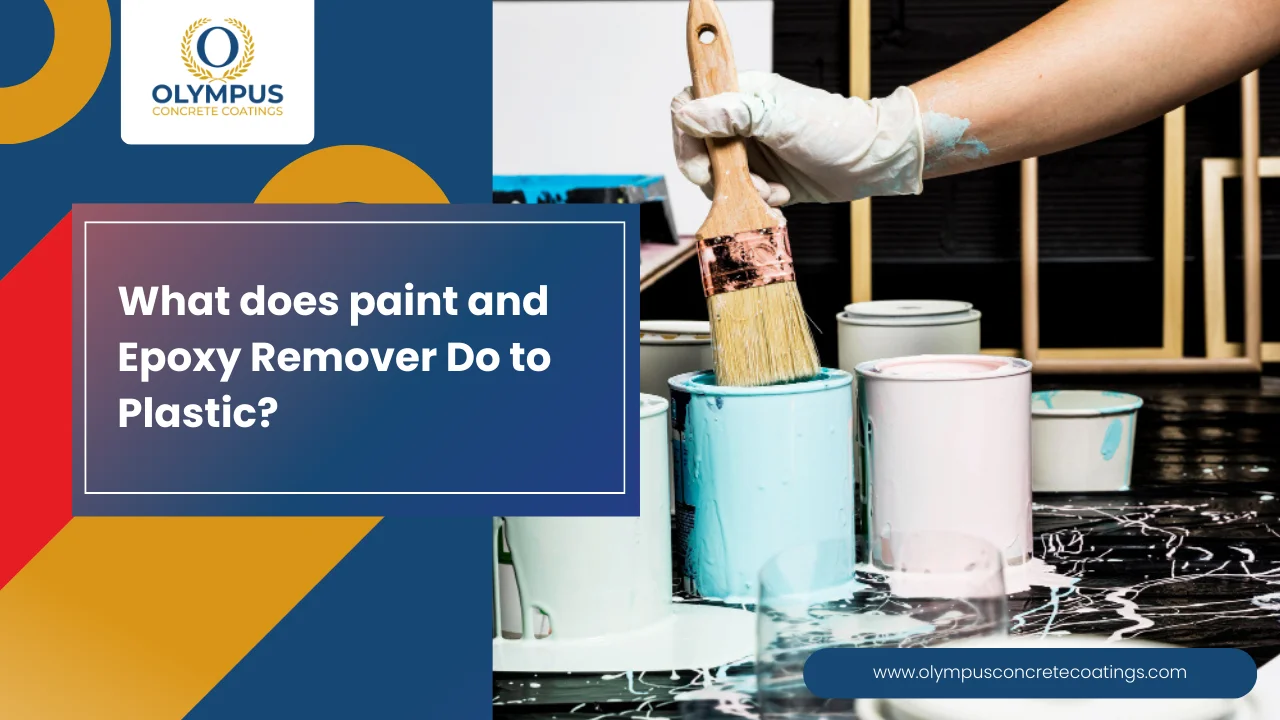
A common question that most people ask is, how to safely clean paint and epoxy without damaging the surface. Another common concern is what happens when paint or epoxy remover comes into contact with plastic. If you have similar questions and want to know what paint and epoxy remover do to plastic, you are at the right place. Whether you are working on a garage floor or handling a DIY project, understanding the effects of these harsh chemicals on plastic will help you save from big, costly blunders. So, let's not waste more time and explore what paint and epoxy remover do to plastic, how to use them safely, and what alternatives might work better.
Paint and epoxy removers contain strong chemicals like methylene chloride, acetone, or N-methyl-2-pyrrolidone (NMP). These products are made to break down tough coatings like latex, oil based paints, or cured epoxy. While they work best for metal or concrete surfaces, these chemicals might not act well if they interact with plastics because of their synthetic composition.
There are multiple types of plastics found, think of the hard PVC in pipes or the flexible plastic in a shower curtain, each type responds differently to chemicals. Knowing this is important before applying any remover to or near the plastic surface so you don't end up damaging your project. Some plastics may stand firm against brief exposure to harsh chemicals, while others can get immediate damage.
At Olympus Concrete Coatings, we know how to work with paint and epoxy projects safely, even around delicate materials like plastic. Our team uses expert techniques to provide stunning finishes without damaging your surfaces.
Paint and epoxy remover affects plastics in several ways, how a plastic reacts depends on the type of plastic and how strong the remover is:
Protect your plastics and use removers safely, keep these few practical steps in mind and you are good to go:
Want to learn more about floor care? Don't forget to check out our blogs for an ultimate epoxy guide.
Choose not to use any chemical removers when you are working with delicate plastics or when you are unsure about its compatibility. Rather, go for:
Q1. Can I use paint and epoxy remover on all plastics?
No, many plastics can be damaged by removers. Go for the ones that are mild and plastic safe. Always test on a small area.
Q2. What should I do if the remover damages my plastic?
Wipe it off immediately with mild soap and water. If damage occurs, consult professionals for repair.
Q3. Are there any plastic safe paint removers?
Yes, citrus based or soy based removers are often safer for plastics. Check the product label for confirmation.
Q4. Can I clean epoxy from plastic without using chemical removers?
Yes, try sanding or scraping gently, but be careful it may scratch the plastic.